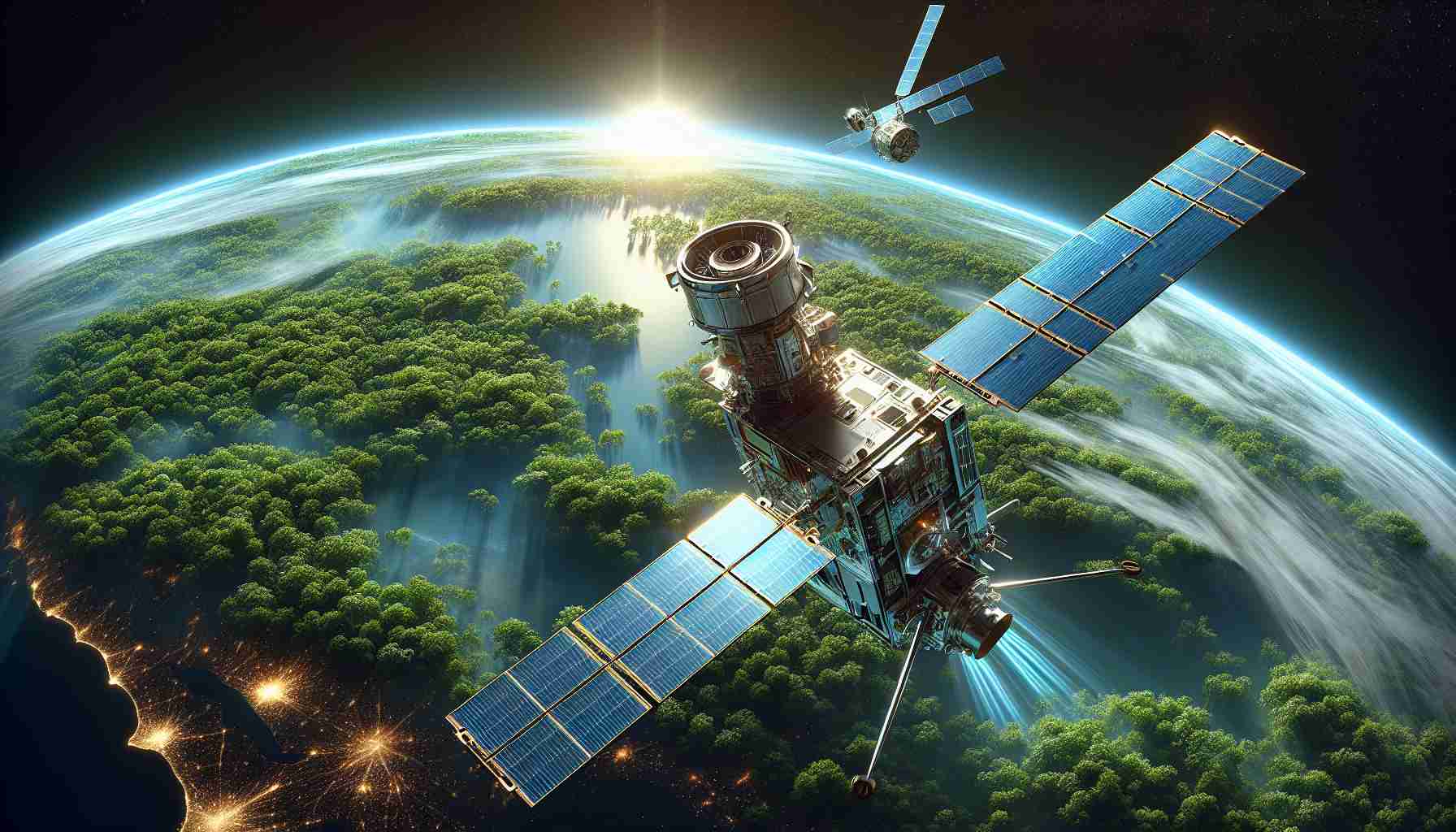In recent years, the devastating impact of forest fires has been accentuated by climate change, resulting in significant ecological and economic damage worldwide. As such, there’s a growing need for innovative solutions to detect and prevent these catastrophic events. Enter the realm of next-generation satellite technology, a transformative approach that promises to revolutionize how we identify and respond to potential forest fires.
The development of advanced satellites equipped with thermal imaging technology is a game-changer in fire detection. These satellites are capable of monitoring vast areas of forest land, identifying anomalies in heat patterns that typically precede wildfires. By detecting fires in their initial stages, these satellites can provide early warnings that are crucial for rapid response efforts.
One notable example is the European Space Agency’s (ESA) Copernicus program, which utilizes the Sentinel-3 satellite. This satellite employs a sophisticated combination of optical and thermal sensors to accurately map land surface temperatures and fire hotspots. The data collected offers invaluable insight into both fire prevention and understanding the progression of active fires.
Moreover, organizations like NASA are continually advancing satellite capabilities with projects like the Global Fire Monitoring initiative. Through detailed data analysis and modeling, they provide governments and disaster response teams with critical information to improve resource allocation and mobilize firefighting efforts efficiently.
This satellite-driven innovation not only enhances our ability to safeguard natural landscapes but also supports efforts to minimize the carbon footprint of forest fires, offering a sustainable path forward in the battle against this escalating global threat.
Revolutionizing Fire Detection: The Impact of Next-Generation Satellite Technology
The escalation of forest fires in recent years, exacerbated by climate change, poses a major threat to the environment, economy, and communities worldwide. In response to these challenges, the development and deployment of next-generation satellite technology have emerged as a pivotal advancement in detecting and preventing these catastrophic events. Utilizing advanced thermal imaging, these satellites offer a cutting-edge approach to fire management, promising significant benefits for both ecological preservation and disaster mitigation.
Environmental Impact
Forests play a vital role in maintaining ecological balance by acting as carbon sinks, preserving biodiversity, and regulating the Earth’s climate. However, when forest fires occur, they release significant amounts of carbon dioxide and other greenhouse gases into the atmosphere, contributing further to global warming. By providing early warnings of impending fires through the detection of heat anomalies, satellite technology can help mitigate these impacts by enabling quicker response times. This rapid intervention not only reduces the immediate environmental damage but also lessens the long-term carbon emissions associated with large-scale fires, thus aiding in efforts to combat climate change.
Implications for Humanity
For communities living near forested areas, the threat of wildfires presents ongoing risks to their safety, health, and livelihoods. Satellite technology plays a crucial role in such scenarios by offering timely data that informs evacuation plans and resource distribution. By ensuring the efficient delivery of aid and protection, these innovations support human resilience and adaptability to natural disasters. In addition, as technology advances, there is the potential for widespread global adoption, which could standardize and improve international disaster response measures, saving lives and safeguarding communities on a larger scale.
Economic Ramifications
Economically, forest fires result in substantial losses, from damage to infrastructure and homes to long-term impacts on industries like agriculture and tourism. The deployment of satellites like those from the ESA’s Copernicus program and NASA’s Global Fire Monitoring initiative helps minimize these economic losses. By optimizing firefighting efforts and improving resource allocation, governments can reduce the financial burden associated with disaster response and recovery. Moreover, protecting forests also preserves their economic value as resources and recreational spaces, contributing to sustainable economic practices.
Future of Humanity
The integration of satellite technology into global fire management strategies is indicative of a broader trend toward using innovative solutions to tackle pressing global challenges. As climate change continues to pose new threats, humanity’s ability to adapt will rely increasingly on leveraging technology. The advancements in satellite fire detection offer a glimpse into a future where environmental protection is bolstered by cutting-edge tools, fostering a more sustainable and secure world. They represent a step toward a future in which humanity not only confronts but also effectively mitigates the impacts of climate change, ensuring the well-being of future generations.
In conclusion, next-generation satellite technology is revolutionizing the fight against forest fires, with profound implications for the environment, humanity, and the economy. By leveraging these advancements, we pave the way for a more resilient and sustainable world.
The Future of Fire Detection: How Satellite Innovations are Transforming Forest Fire Management
In an era marked by the intensifying impact of climate change, the need for cutting-edge solutions to address forest fires has never been more pressing. The integration of advanced satellite technology into fire detection efforts is reshaping our understanding and management of these catastrophic events.
How Satellite Technology is Revolutionizing Fire Detection
The latest advancements in satellite technology, particularly thermal imaging, have ushered in a new age of early forest fire detection. Equipped with the ability to monitor expansive regions, these satellites can identify heat anomalies that often herald the onset of wildfires. This early detection is pivotal, as it enables prompt action to avert widespread devastation.
# Key Innovations and Initiatives
One significant player in this field is the European Space Agency’s Copernicus program, featuring the Sentinel-3 satellite. This satellite employs advanced optical and thermal sensors to precisely map land temperatures and pinpoint fire hotspots. The data gleaned from Sentinel-3 dramatically enhances our understanding of fire dynamics, aiding both prevention and suppression efforts.
On the other side of the Atlantic, NASA is spearheading projects like the Global Fire Monitoring initiative. By harnessing detailed data analysis and sophisticated modeling, NASA provides invaluable support to governments and disaster response teams, ensuring more strategic allocation of resources and efficient mobilization of firefighting units.
Features and Benefits of Satellite Technology in Fire Management
– Early Detection and Rapid Response: Satellites equipped with thermal imaging offer the capability to detect fires at their inception, allowing for quicker response times that can prevent the spread of fires and reduce damage.
– Comprehensive Monitoring: Satellites can cover vast forested areas, providing a broader scope of monitoring than ground-based methods, which are often constrained by accessibility and visibility limitations.
– Data-Driven Insights: The integration of both optical and thermal data provides a multidimensional view of fire activity, offering deep insights into fire behavior and progression. This intelligence is crucial for developing targeted fire management strategies.
Sustainability and Environmental Impact
The role of satellites in fire detection and prevention is not limited to immediate benefits. By reducing the scale of forest fires, satellite technology contributes significantly to minimizing greenhouse gas emissions. This sustainable approach underlines the critical importance of embracing tech-driven methods in combating environmental challenges.
Predictions and Future Trends
Looking forward, the continued evolution of satellite technology will likely bring even more sophisticated fire detection systems. As imaging sensors grow more advanced and data processing becomes more refined, we can anticipate even greater precision in fire prediction and management.
The use of next-generation satellite technology in forest fire management is not only a marker of scientific progress but also a testament to our commitment to preserving the planet’s ecosystems. This technology promises a future where forest fires are detected with accuracy and combated with efficiency, paving the way for a safer, more resilient world.
For more information about satellite technology and its applications, visit the European Space Agency or NASA websites.







